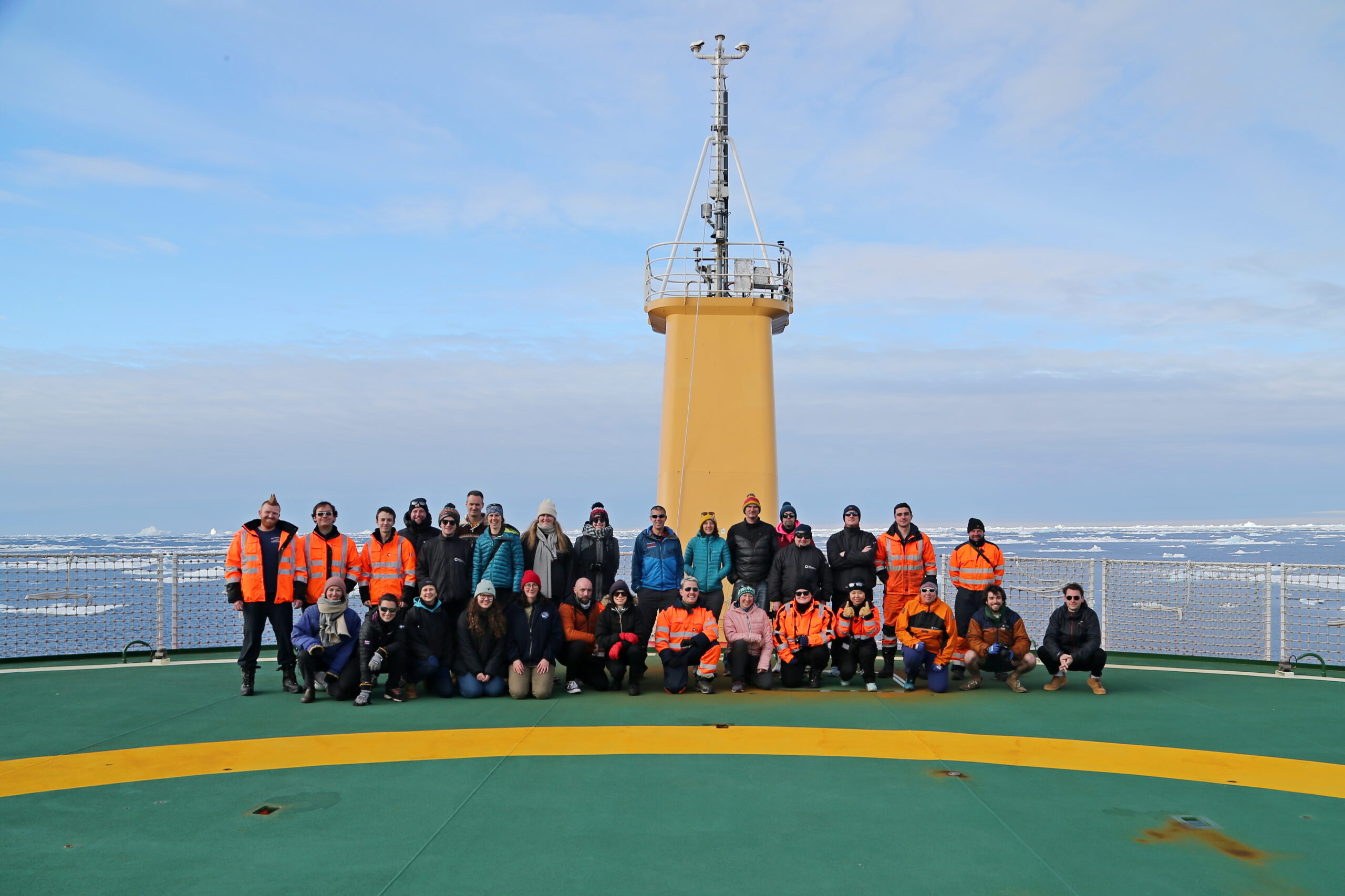Six things we learnt on the Polar Science Trials
3 May, 2023 RRS Sir David Attenborough
The polar science trials cruise is over, everyone has travelled home (or are off on their next adventure), and now it’s time to reflect on a successful expedition. Thanks to all the crew, science support and scientists involved – we wouldn’t have been able to do all that we did without everyone’s hard work.
The polar science trials were set up to test the performance and suitability of the vessel to undertake grant-funded science. Ultimately that meant that some things would work and some things wouldn’t, and we were there to find both. Having said that, we worked with national and international colleagues from both research centres and universities to collect high quality scientific samples and undertake laboratory analyses that could contribute to existing funded programmes to make the most of the opportunity.

During the trials we deployed 196 instruments over the side, including 113 Conductivity Temperature Depth (CTD) packages, 31 multicorers, 17 lowed cameras, 22 nets, 7 floats and 3 moorings. As part of the CTD stations we collected 1794 bottles of water (each containing 20l) to feed our various scientists with water they could analyse for salts, oxygen, nutrients, chlorophyll and trace metals. We paid out or hauled in 293.4 km of wire in order to make these deployments. Some of those nets were sampling the seabed 5500m below the vessel and deployments took 6 hours and required nearly 8 km of cable to reach those depths. On the one occasion where the winch stopped working properly that same deployment took 15 hours, many thanks to our deck engineers, science bosun and crew for spooling it back on!
Here are some of the highlights of what we found out during the trip:
- The SDA’s first trip contributed to a data series (SR1B) of ocean properties across that now spans over 30 years. Such datasets are needed to distinguish natural variability and long-term change
- Trying to detect trace levels of iron in seawater from a big metal ship is challenging and hard work. It can involve hair nets, clean suits, coordinated water bottle moving and quite frequently unexpected face washes by under-pressure seawater bottles. It brings its own frustrations, but is very rewarding contributing to our understanding of carbon cycling in an iron-limited environment
- Everyone on the ship is fascinated by the seabed from the bridge to the engine room (let alone the scientists)! We broadcast video, from a camera mounted on our seabed sampling instruments (the multicorer), across the network on the ship and it was avidly watched by many. The around the Antarctic Peninsula are important sources of nutrients to the overlying seawater and we saw some fantastic sea-life on moraines that had formed close to the glaciers in some of King George Island’s fjords. These Antarctic fjords are rich in life and are important stores of organic carbon in the oceans
- Benthic biologists are very happy with small samples, particularly when they are of deep-sea animals that live on the seafloor at over 5 km water depth. But when winches go wrong at those depths it takes a long long time to recover all the wire!
- The person playing fussball at the forward end of the ship has an advantage as the fussball table has a slight starboard list
- Breakfast smoothies on research cruises are an excellent way to start the day.
Thanks to all for a great adventure and a successful cruise. We learnt loads about the ship, we have a long list of things to improve, but we also learnt we have a great base to start from.
Written by Kate Hendry, a polar oceans expert at British Antarctic Survey.
Find out more about the SDA’s polar trials here!